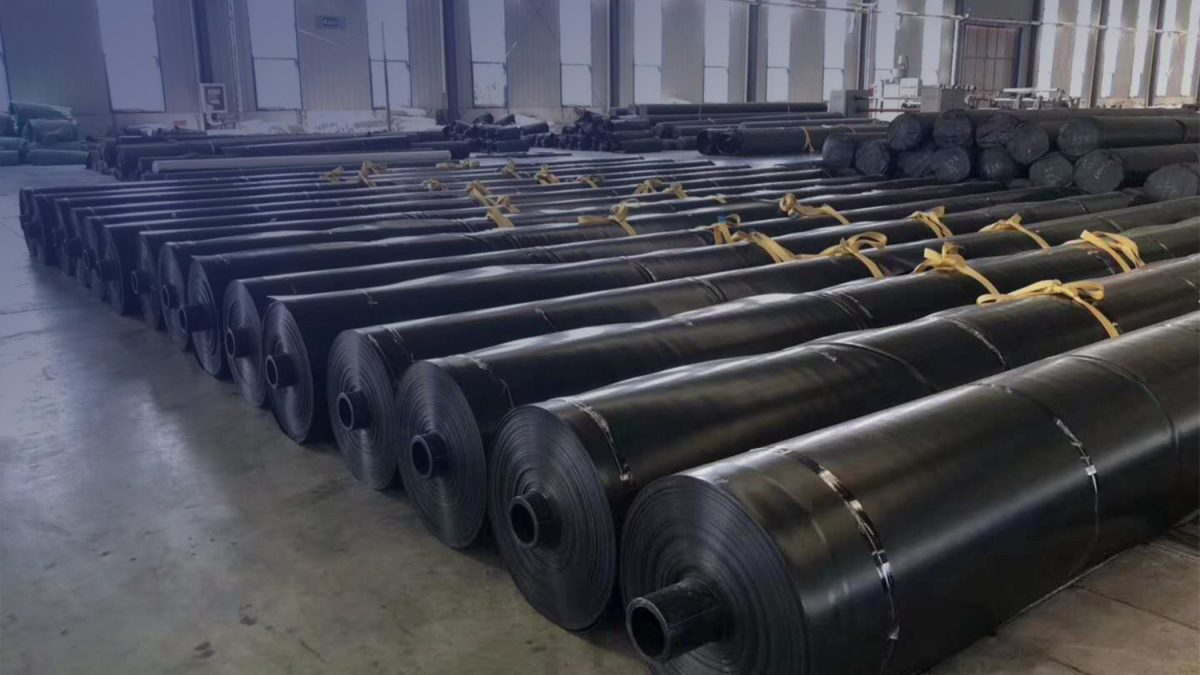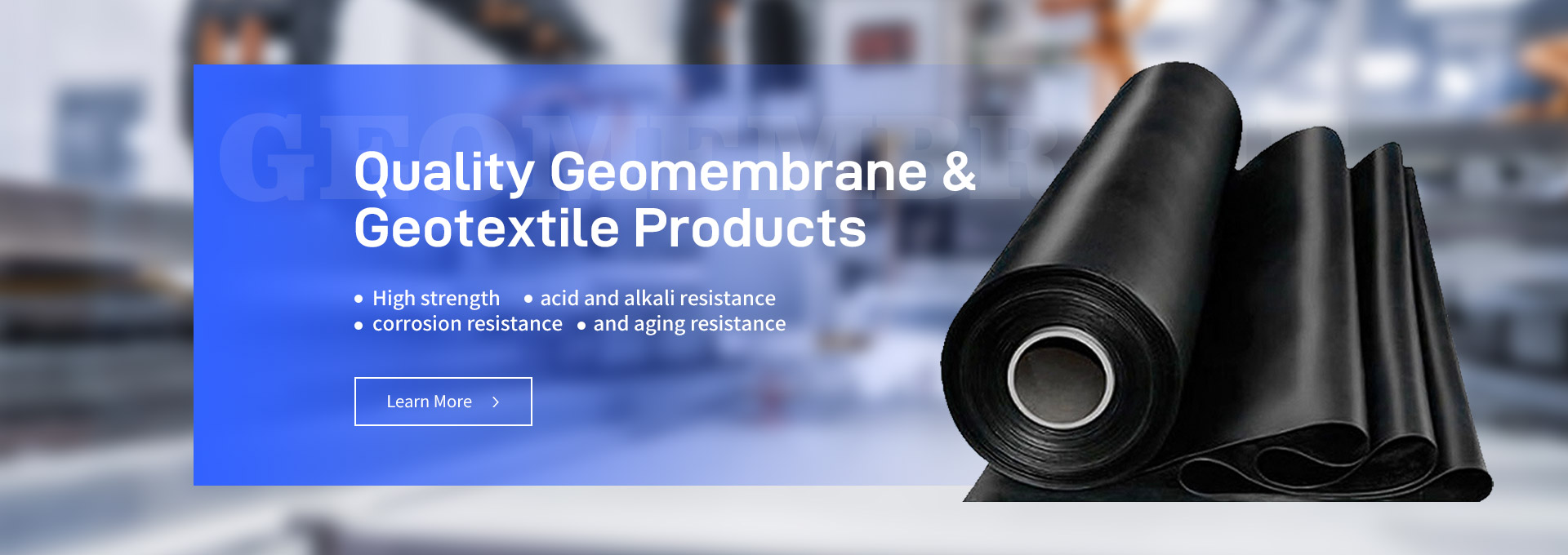Geomembranes play a crucial role in various industries, from civil engineering to environmental protection, acting as barriers for liquids, gases, and other substances. The ability to choose the right geomembrane for your project is critical to ensure its durability, efficiency, and cost-effectiveness. One of the key factors to consider when selecting a geomembrane is its stretch and elasticity.

The Importance of Stretch and Elasticity in Geomembranes
When choosing a geomembrane for a project, understanding the significance of stretch and elasticity is essential. These properties relate to the material’s ability to deform under stress without breaking, allowing the geomembrane to adapt to movement, temperature fluctuations, and mechanical impact.
1.Stretch:
Stretch refers to the ability of the geomembrane to expand or elongate when force is applied. A geomembrane with higher stretch capacity will be able to handle the stretching forces encountered during installation or as a result of external forces, such as changes in temperature or pressure. This is particularly important in applications where the geomembrane needs to conform to uneven surfaces or adjust to shifting ground.
2.Elasticity:
Elasticity refers to the ability of the material to return to its original shape after being stretched or deformed. Geomembranes with higher elasticity can recover from deformation, making them ideal for projects where the membrane might experience cyclical or repetitive stresses, such as temperature changes, water load variations, or mechanical movement.
Both of these properties affect the longevity and effectiveness of geomembranes, making them crucial considerations when selecting the right product for your specific application.
How to Choose the Right Geomembrane Based on Stretch and Elasticity
When selecting a geomembrane for your project, you’ll want to consider several factors that can influence stretch and elasticity. Here’s a breakdown of key factors to keep in mind:
1. Material Type
Different types of geomembranes have different stretch and elasticity characteristics. The most common materials include:
HDPE (High-Density Polyethylene): HDPE geomembranes are known for their durability and chemical resistance. They offer moderate stretch capabilities, making them suitable for applications like landfill liners, pond liners, and containment areas. While they may not be as elastic as some other materials, HDPE geomembranes are highly resistant to punctures and tears.
LLDPE (Linear Low-Density Polyethylene): LLDPE geomembranes offer superior stretch and elasticity compared to HDPE. They are more flexible, which makes them ideal for applications where the geomembrane will be subjected to deformation or temperature changes. LLDPE is commonly used in projects like mining operations or reservoirs.
PVC (Polyvinyl Chloride): PVC geomembranes are known for their excellent stretch and flexibility, making them ideal for applications that require high elasticity. PVC is commonly used in areas where the geomembrane needs to be easily installed or adjusted to various surface shapes.
2. Project Requirements
When choosing a geomembrane, consider the specific needs of your project. Here are some key factors that will help you determine whether you need a material with high stretch or elasticity:
Temperature Fluctuations: If your project involves significant temperature changes, you’ll need a geomembrane that can expand and contract without cracking. Materials with higher elasticity, such as LLDPE, are better suited to this type of application.
Uneven or Shifting Ground: If the installation area has uneven ground or is subject to shifting due to soil movement or seismic activity, a geomembrane with higher stretch will perform better. Materials like LLDPE or PVC can adapt to these conditions, while HDPE may be more prone to damage.
Installation Ease: Some projects may require easier handling or more flexible geomembranes. In these cases, it’s advisable to buy geomembrane materials with higher stretch and elasticity, as they are easier to manipulate and install in challenging environments.
3. Thickness and Durability
The thickness of a geomembrane can also affect its stretch and elasticity. Thicker geomembranes generally have lower stretch capacity but may offer greater durability and resistance to external factors like punctures and tears. For applications where a higher level of stretch is necessary, a thinner, more elastic material might be more suitable. Always balance the need for flexibility with the durability required by your specific project.
4. Chemical and Environmental Resistance
The stretch and elasticity of a geomembrane must not compromise its resistance to chemicals, UV radiation, or other environmental factors. It is crucial to ensure that the material you select not only meets stretch and elasticity requirements but also provides adequate protection against environmental stresses that may be present at your project site. For instance, HDPE is often favored in applications where chemical resistance is crucial, while PVC may offer better resistance to UV degradation.
5. Cost Considerations
As with any product, cost is always an important factor. Best geomembrane options may come with a higher price tag due to their advanced materials and superior stretch and elasticity. However, it’s important to view the initial cost in the context of the long-term value. A more elastic and stretchable geomembrane can prevent costly failures, repairs, and replacements over time, ultimately saving you money in the long run.
6. Performance Testing
Before making your final decision, consider conducting performance testing on potential geomembranes. Test the stretch and elasticity under various conditions, such as temperature fluctuations, stretching, and compression, to see how the material reacts. This will give you a better understanding of how the geomembrane will perform in real-world applications.
7. Sourcing from a Reliable Supplier
Once you’ve identified the ideal material and specifications for your project, it’s time to buy geomembrane from a reputable supplier. Always ensure that the geomembrane you purchase comes from a reliable source with a proven track record of providing high-quality products. Suppliers with experience in the industry will be able to guide you in selecting the right product based on stretch, elasticity, and other important factors.
Conclusion
Choosing the right geomembrane for your project requires careful consideration of its stretch and elasticity properties, as well as other factors like material type, project requirements, and environmental conditions. By understanding how these properties impact the performance and longevity of the geomembrane, you can make a more informed decision that ensures the success of your project. Whether you're looking to buy geomembrane for a landfill, water reservoir, or mining project, taking the time to evaluate your options carefully will lead to better results and greater satisfaction in the long term. Always aim for the best geomembrane suited to your specific needs and project requirements.

